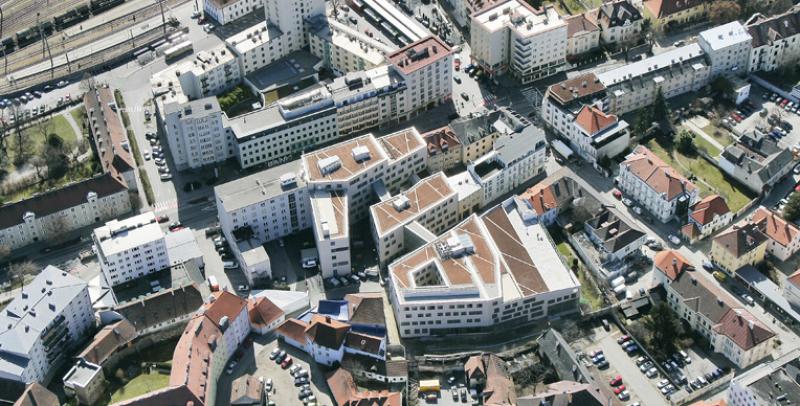Passive house XXL in Krems

The “Lower Austrian House” in Krems brings together a variety of public administration offices under one roof, across around 10,000 square meters of usable space. Among others, it is home to the Krems Central District Administration, the building authorities and the road construction office of the region, as well as the school district authorities and the Krems Municipal Health Administration.
The largest passive office building in Austria was opened in lower Austria’s Krems. The design for the large new building in Krems’ little old city comes from the architect offices AllesWirdGut and feld72.
Back in 2005, the working group of AllesWirdGut, feld72 and the engineers Fritsch, Chiari & Partner (FCP) won an international competition; 2009 saw the beginning of construction and on 13 May 2011 the new building was opened.
The Lower Austrian House is on Ringstrasse in Krems’ old town, close to the train station and Krems’ city centre. Because of the small-sized surroundings, the architects classified the building volume into three structures; next to this is a car park with around 160 parking spaces was built. In total, around 200 employees work in the new building.
The functional specifications for the new building specified a heating consumption maximum of 10kWh/(m²a). With 9.9 kWh/m²a, this mark was almost reached. The passive house standard (15 kWh/m²a) is undercut considerably thanks to its compact building volume. For this, ambitious, but not exaggerated, levels of insulation for the building shell were needed: the U value for the outside walls is 0.15 W/m²K, the roof 0.1 W/m²K and each of the windows 0.82 W/m²K. In the blower-door-test, a value of 1.55 h-1 for the building insulation was reached.
According to AllesWirdGut the passive house construction lowers the CO2 emission of the building (in comparison to a standard office building that meets the energy regulation) by 100 tonnes a year - that is almost as much as the heating from 25 single family homes.
Much higher –ten times higher, to be precise – are the CO2 savings in the building construction itself. By using “eco cement” (granulated cinder cement brand Slagstar with reduced CO2 concentration) in all concrete construction elements, the CO2 emissions for the construction of the Lower Austrian House sank by about 1,000 tonnes.
